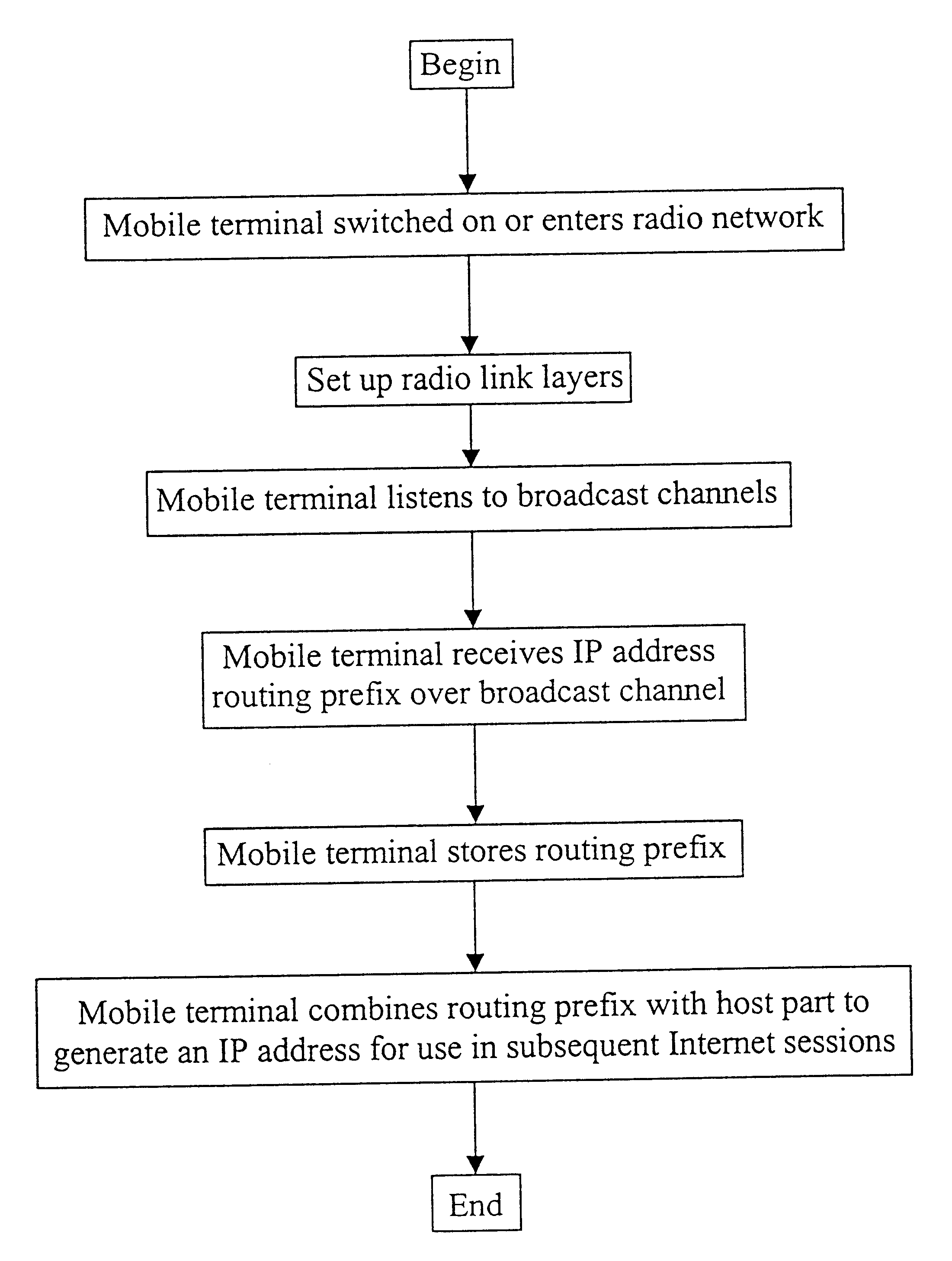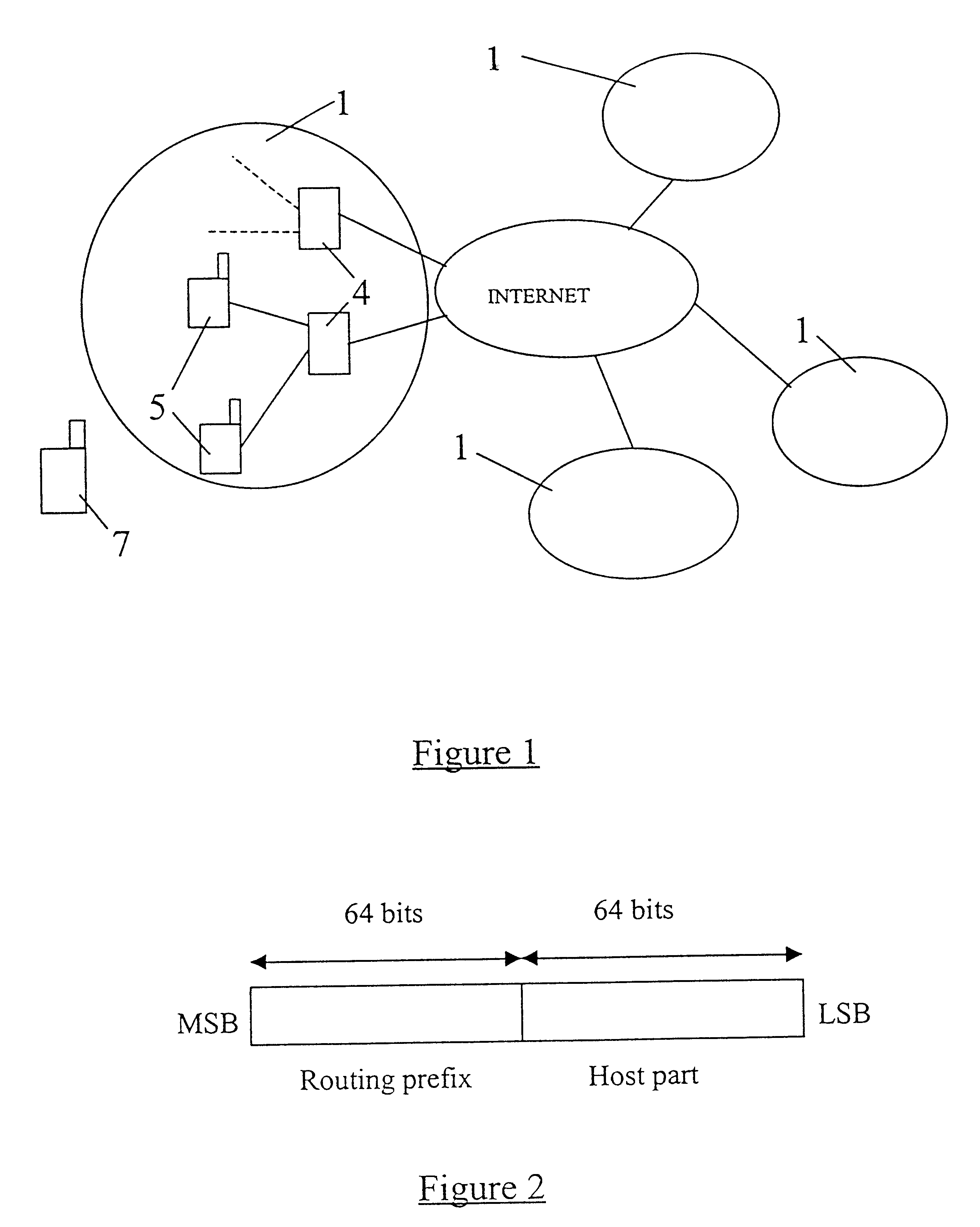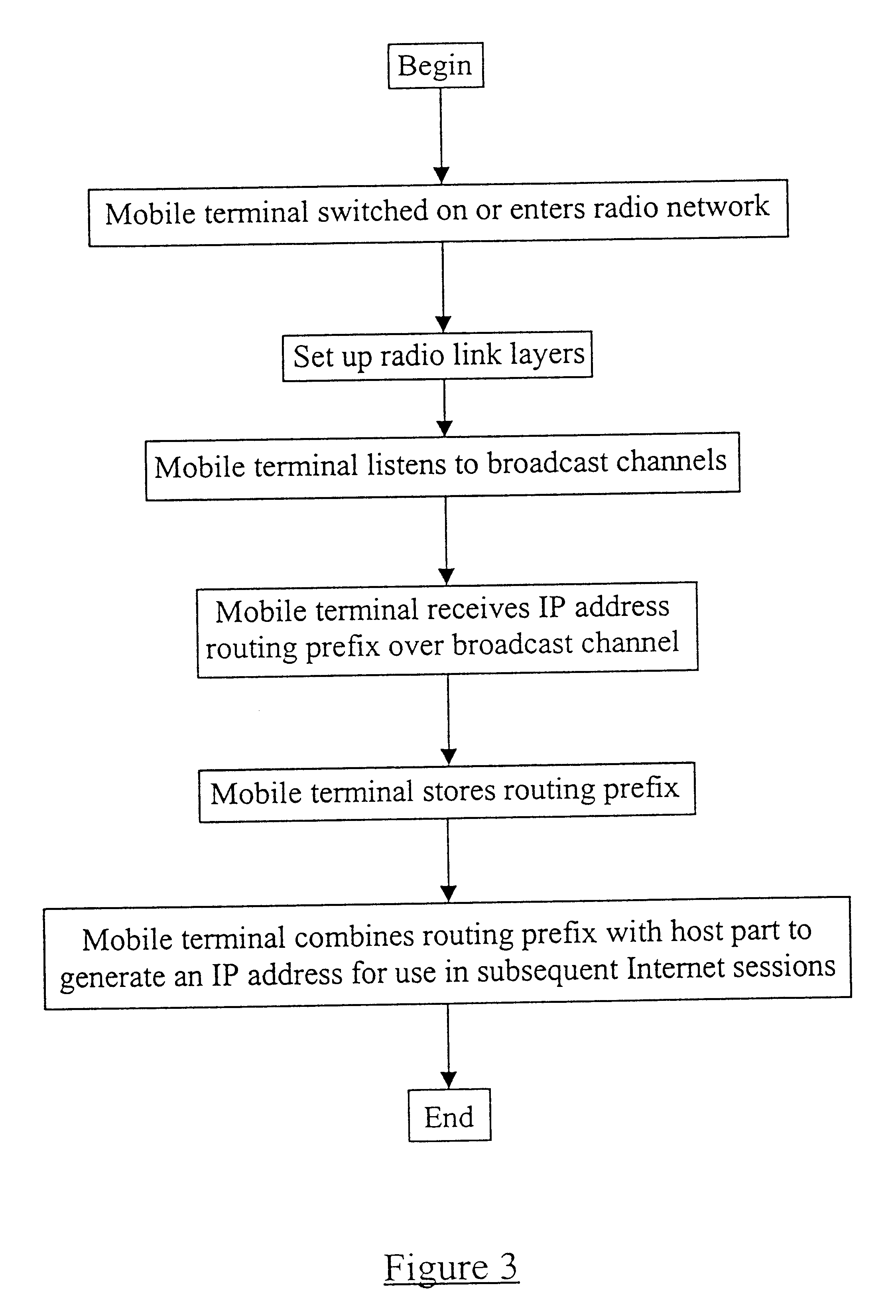Mobile internet access
a mobile terminal and internet access technology, applied in data switching networks, special services for subscribers, multiplex communication, etc., can solve the problems of consuming extra processing and transmission capacity, extremely slow and unreliable internet access via mobile terminals,
- Summary
- Abstract
- Description
- Claims
- Application Information
AI Technical Summary
Benefits of technology
Problems solved by technology
Method used
Image
Examples
Embodiment Construction
A UMTS based telecommunication system incorporating the proposed General Packet Radio Service (GPRS) is illustrated schematically in FIG. 1 and comprises a number of radio networks 1 which may or may not have overlapping radio coverage. Each radio network 1 has its own unique radio network identity (ID1 to ID4) and comprises a plurality of Radio Network Controllers (RNCs) 4, each RNC4 being responsible in turn for a plurality of Base Stations (BSs) 5. Each RNC 4 effectively comprises an integrated IAS (or the functionality thereof), which enables the RNCs 4 to be coupled directly to the Internet.
FIG. 1 illustrates a mobile terminal 7 which is located within a cell associated with a given radio network 1. When the mobile terminal 7 is switched on, or first enters the geographical area covered by the radio network 1, the terminal 7 begins scanning the broadcast channel(s) of that network 1. By listening to the broadcast information, the mobile terminal 7 is able to select a suitable n...
PUM
 Login to View More
Login to View More Abstract
Description
Claims
Application Information
 Login to View More
Login to View More - R&D
- Intellectual Property
- Life Sciences
- Materials
- Tech Scout
- Unparalleled Data Quality
- Higher Quality Content
- 60% Fewer Hallucinations
Browse by: Latest US Patents, China's latest patents, Technical Efficacy Thesaurus, Application Domain, Technology Topic, Popular Technical Reports.
© 2025 PatSnap. All rights reserved.Legal|Privacy policy|Modern Slavery Act Transparency Statement|Sitemap|About US| Contact US: help@patsnap.com



